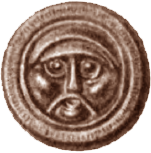The story of Vikings in Russia begins in a time before what is typically referred to as the Viking age. Before the Vikings, Scandinavians, specifically Swedes, began to expand eastward, into the southeastern Baltic region. Starting in the late eighth century, Scandinavians had begun to construct and inhabit trading posts in Staraya Ladoga, on the river Volkhov (modern day Russia), which they called Aldeigjuborg (Somerville et al., 2014).

What drove the Scandinavians to the east was trade opportunities. Vikings flourished here, trading anything from furs, to honey, to wax, to ivory, and even slaves and weapons. These were often traded for silver coins from Arabia, to the extent that tens of thousands of them have been found in Viking troves. However, Vikings were not simply interested in peaceful trade in Eastern Europe, but were prone to fighting and could rely on this tendency to earn them loot or pay (ibid.).

The first European reference made to the Rus was the entry for the Carolingian Annals of St-Bertin made in AD 839, which links the Rus to Sweden. In this entry, an interaction between envoys of the Byzantine Emperor Theophilus, Louis the Pious, and envoys of the king of the Rus, which was called the Khagan. This narrative presents the envoys of the Khagan as having been sent to establish a friendship with Louis the Pious, with Theophilus’ envoys endorsing their purpose. However, Louis, perhaps wisely, did not believe that these envoys were actually on a mission to find friendship but rather believed they were spies (Nelson, 1991). The account does not conclude whether Louis’ suspicions of espionage were true but, given the Vikings’ penchant for warfare, it would seem to be a fair judgement.
Later, however, a group of Russian Vikings attacked Constantinople with a fleet of ships, two hundred strong. This attack took place in June of 860, while Emperor Michael III was fighting against Muslims. This attack was thwarted by a sudden storm which would be attributed to the prayers of Constantinople’s Christian defenders (ibid.).

The Russian Primary Chronicle (or The Tale of Bygone Years, after the eponymous first sentence of the work) is considered to be one of the most important sources of information regarding the activities of Scandinavians in Eastern Europe. This source, compiled in the late eleventh century, addresses these Eastern activities from the mid-ninth century into the twelfth century. Unfortunately, though, of the information presented, the tales predating the middle of the the eleventh century are contested in their authenticity among scholars (Somerville et al., 2014).
In this text, though we cannot be sure of its validity, we see the formation of the Russians. After a Viking conquest in the East, three brothers—Rurik, Sineus, and Truvor—settled three towns. Rurik’s town of Novgorod would be known as the land of the Rus to these Eastern Vikings. Shortly after the founding of these towns, Rurik’s brothers would both die, leaving him to rule all of the land they had divided among themselves. He would then send his underlings to colonize towns across this region, ruling over all these (Cross et al., 1953).
After two years, Sineus and his brother Truvor died, and Rurik assumed the sole authority. He assigned cities to his followers, ruling over the entire affair. According to the Russian Primary Chronicle, two of his vassals would be the same Vikings to lead the attack against Michael III in Constantinople (ibid.).

[A. M.]